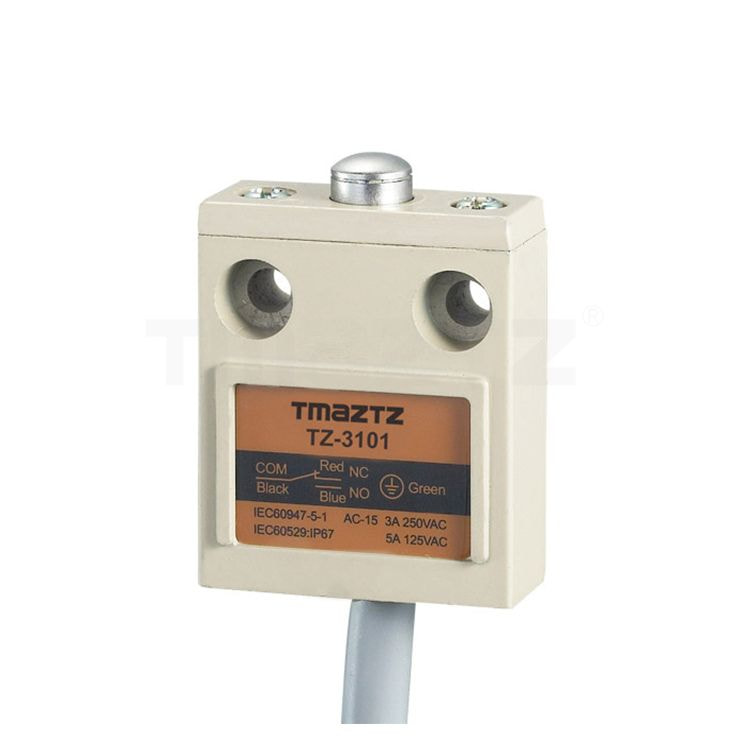What is a limit switch?
A limit switch is an electrical component operated by physical force exerted on an object, primarily used to detect the presence or absence of an object. Initially designed to define the travel limits of an object, it was named "limit switch."
There are four basic types of limit switches:
1.Whisker
2.Roller
3.Lever
4.Plunger
Depending on the application, limit switches can also be a combination of two basic types, such as the roller lever form, which is a combination of a roller and a lever.
Limit switches come in various configurations: normally open, normally closed, or a combination of both. Additional contacts can be added as needed, but this increases the cost accordingly.
Whisker limit switches are often used for quick activation in equipment. When an operator's hand passes over the whisker, it triggers a signal for immediate equipment operation without the need to precisely locate the whisker.
Roller limit switches are commonly used for object detection on conveyor lines. When an object reaches the roller limit switch on the conveyor line, the roller is pushed, triggering a signal, and the controller knows the object is in place.
Lever limit switches, also known as microswitches, are mainly used in some household appliances and have limited applications in industrial control.
Plunger limit switches find a typical application inside electrical control cabinets. When the cabinet door is opened, releasing the plunger limit switch, it illuminates the cabinet's light, facilitating inspection for maintenance personnel. In some cases, it may also shut down cooling fans or air conditioning for energy conservation.
With technological advancements, limit switches are gradually being replaced by proximity sensors in industrial automation applications. Proximity sensors have the advantage of no mechanical moving parts, non-contact detection, and longer switch lifespans. However, limit switches won't completely disappear, as their robustness and reliability are superior to proximity sensors in harsh environments. Additionally, limit switches can handle much higher current signals than proximity sensors.
251
0
0


Comments
All Comments (0)